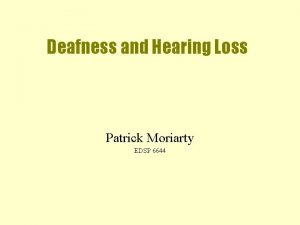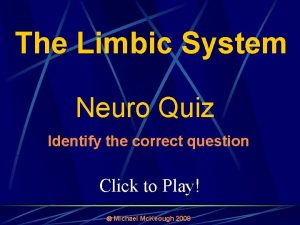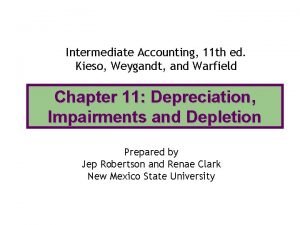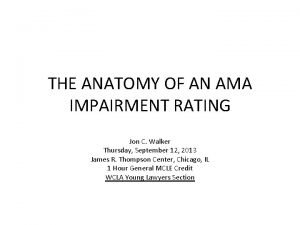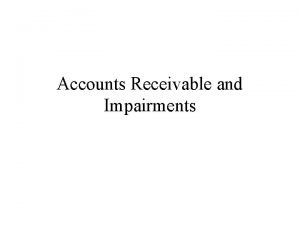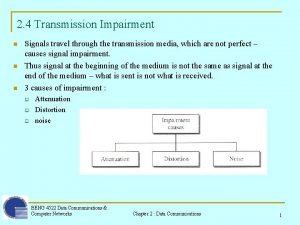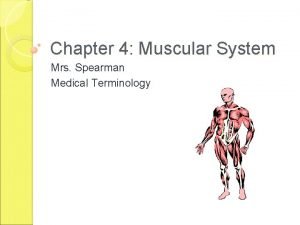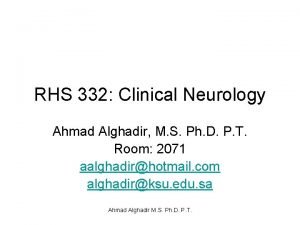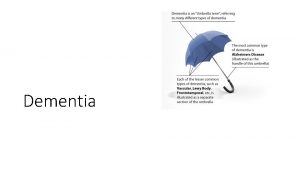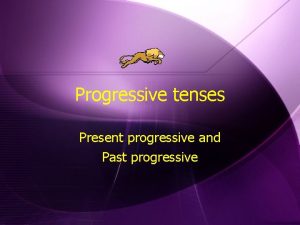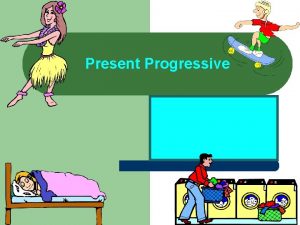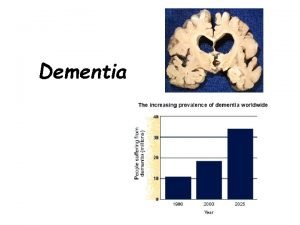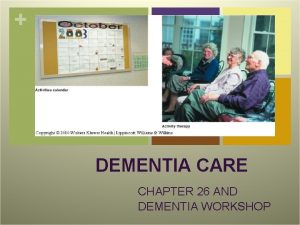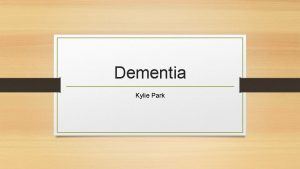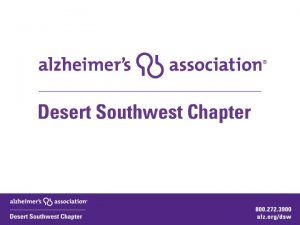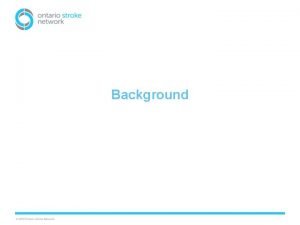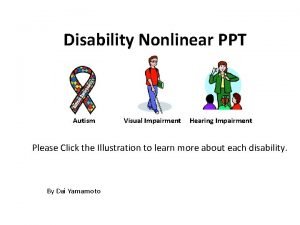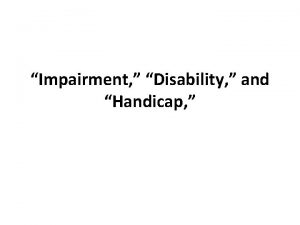Dementia F Etessam MD Dementia A progressive impairment



















- Slides: 19

Dementia F. Etessam. MD

Dementia A progressive impairment of cognitive functions occurring in clear consciousness.

Dementia Global impairment of intellect n n n Memory Attention Comprehension Language orientation learning n n n Mood Thinking Perception Problem solving Personality Social behavior

Epidemiology n n 5 % in general population older than 65 years of age 20 – 40 % in general population older than 85 years of age 15 – 20 % in outpatients general medical practices 50 % in chronic care facilities

Etiology Degenerative dementias n NPH n Deficiency n Metabolic n Tumor n Traumatic n Infection n vascular n Anoxia n Demyelinating dis. n Drugs and toxins n Endocrine n

Head trauma n n n n Delirium Amnesia Personality change Emotional symptoms Headache Insomnia Decreased concentration

NPH n n Impaired memory Ataxia Retardation Incontinency

Ischemic Brain Disease n n Cognitive Impairment Personality change Depressed mood Mood instability

Dementia Common Etiologies n n n n Alzheimer s Disease Vascular Dementia Head Trauma Alcohol – related Dementias Huntington's Disease Parkinson's Disease Pick's Disease Lewy Body disease

Clinical features Cognitive impairment n Language n Praxis n Gnosis n Executive functioning n

Psychiatric Changes n n n Personality changes Behavioral disturbance Psychotic symptoms Sleep disturbances Affective and anxiety disturbances

Neurological signs n n n n Seizures Primitive reflexes Myoclonic jerks Focal neurological signs Pseudobulbar palsy Dysarthria dysphagia

AD Prognosis n Alzheimer’s has a slowly progressive decline. These meds can slow the progression, NOT halt it. Function Time

Diagnosis n n n History/MSE Neurological Examination Labs : CBC, Serum Electrolytes, Renal Function, LFT, TFT, Glucose, Albumin, Vit B 12 Imaging Neuropsychological Testing Psychiatric Evaluation

diagnosis n n n History/MSE Pathology Laboratory evaluation

Compare central sulcus of Alzheimer’s patient with normal 81 year old woman From Whole Brain Atlas at http: //www. med. harvard. edu/AANLIB/home. html

Normal vs AD Brain Normal brain Alzheimer’s brain

Interventions n n Pharmacologic Nonpharmacologic

Thank you
 Functions of past tense
Functions of past tense Present progressive passive exercises
Present progressive passive exercises Perfect progressive past
Perfect progressive past Hearing impairment meaning
Hearing impairment meaning Limbic system impairment quiz
Limbic system impairment quiz Impairment in finance meaning
Impairment in finance meaning Cerebrovascular
Cerebrovascular Pathophysiology of visual impairment
Pathophysiology of visual impairment Ama impairment rating chart
Ama impairment rating chart Carrying amount formula
Carrying amount formula Icidh 2
Icidh 2 Environmental impairment insurance definition
Environmental impairment insurance definition Impairment of accounts receivable
Impairment of accounts receivable Define transmission impairment
Define transmission impairment Impairment related work expenses
Impairment related work expenses Non interest bearing note journal entry
Non interest bearing note journal entry The medical term for hiccup is _____.
The medical term for hiccup is _____. Intangible asset meaning
Intangible asset meaning Icd 10 paranoid personality disorder
Icd 10 paranoid personality disorder Difference between impairment disability and handicap
Difference between impairment disability and handicap



